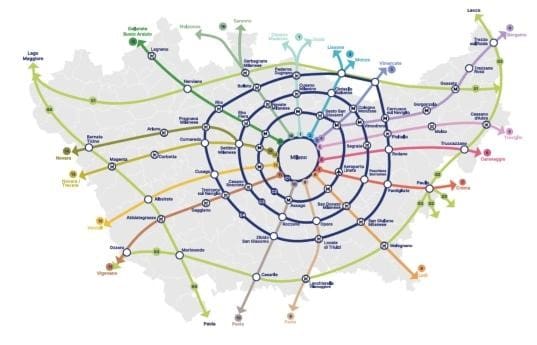750km Milan Network to Make Cycling ‘the Most Obvious Choice’

Milan, Italy
Milan is set to become Italy’s most cycle-friendly city, courtesy of a plan to develop a 750km network of cycling infrastructure and increase cycling rates to 20% of all journeys in the city.
Late last year, Milan Metropolitan Council approved the €240 million (A$383 million) Cambio biciplan for 24 “super-cycle lines”: four circular, 16 radial and four greenway routes.
The network will link the city centre to the hinterlands, crossing municipalities and connecting schools, businesses, stations, hospitals, parks and museums,
Milans’s Councilor responsible for mobility, Beatrice Uguccioni, said the network, developed in collaboration with Dutch spatial economic research firm Decisio, would be unique in Italy.
It aimed to make bikes the most convenient mode of transport and “the most obvious choice” for Milan’s population, including ensuring 80% of the city’s homes and services are within 1km of dedicated cycle routes.
“The aim is to bridge the gap we have with respect to the most virtuous European metropolitan areas,” she said.
“This will lead to less emissions and traffic, but also more road safety, as cyclists and motorists will not have to share the same road.”
While the northern Italian city is currently known for its industry, congestion and visible air pollution, the ambio biciplan sought to create a place where residents and visitors can cycle “to reach cinemas, schools, health centres and meeting places on innovative routes and to do so in complete safety”.

The council says it aims to achieve the project’s “ambitious” goals by 2035: 750km of cycling infrastructure in place and 20% of the city’s total journeys completed by bike, including 10% of trips between municipalities.
“Our territory is the ideal terrain for imagining and building the future of mobility. We live in densely populated areas and, even if Milan is an important gravitational centre, the inter-municipal movement lines are equally important: relatively short stretches (under 10km) that see more than 1,000 movements per day,” the council says in a statement.
It says the super-cycle paths are designed for intense bicycle traffic and suitable for a high cruising speed , compatible with widespread use of bicycles, including e-bikes, for daily journeys of medium length (between 5 and 15km).
“The objective of a biciplan, however, is not to define in detail all the cycle paths but to identify the primary corridors at the metropolitan level and provide the technical and economic planning to be outlined in the subsequent phases at the local level.
